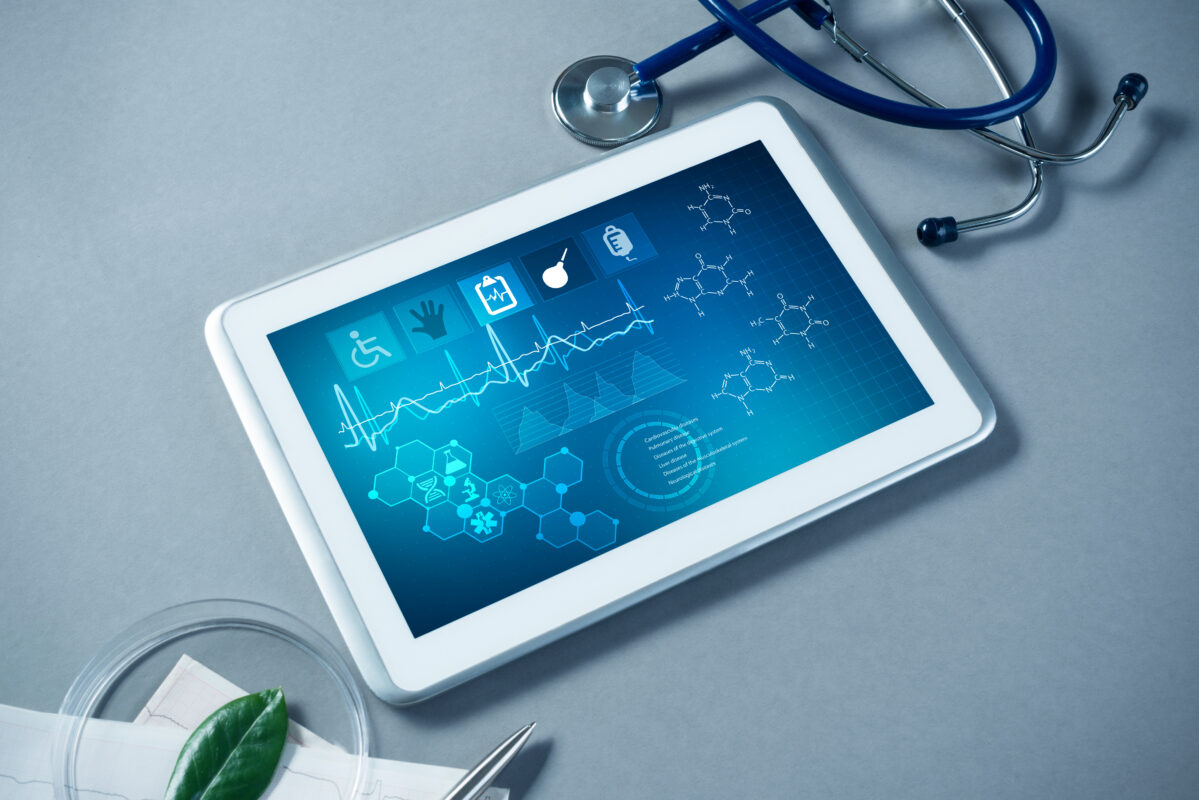Published online on Medium, 17th April 2019
Over a decade ago, the human genome was successfully sequenced and, as a result, medicine underwent a dramatic transformation. This turning point in science, only possible because of advancements in technology, was the most extensive attempt at decoding the most complex database in the world: the human body. Yet again, we find ourselves at a moment in history where the convergence of medicine and technology promises a data-led healthcare revolution, only this time the method, purpose and destination are all far less clear. As the hype around AI sours to scepticism, and machines struggle to outperform doctors, we are left wondering what does the future of AI in healthcare really look like, and who is going to get us there?
Meet the grandfather of Clinical AI
During the 1980’s Professor Agnar Hoskuldsson, an ardent mathematician and data scientist, came across the emerging study of chemometrics: the use of mathematical and statistical methods to improve our understanding of chemical information. He would go on to become a pioneer in the field, winning the Herman Wold Gold medal for his contributions, and publishing over 30 extensively cited papers. Accomplishments that reflect decades of research motivated by a singular purpose — to develop AI capable of generating new and transformative knowledge from our own biological data.
AI is stuck in a cycle of automation and optimisation
To date AI has only demonstrated its competency in either replicating existing methods of care through automation, or marginally optimising them. Optimisation of care is most common in imaging based diagnostics; this comes as no surprise as 90% of today’s healthcare data is generated from medical imaging. While these accomplishments have offered medicine marginal improvements, AI has largely fallen short of industry, and public, expectations. This can be attributed to several key limitations, the most notable of which are: a lack of large quality datasets, insufficient clinical guidance, or conversely clinical bias, insufficient curation, and uncertainty around how to ethically and effectively monetise healthcare data. Another stumbling point has been the medical application of off-the-shelf algorithms, initially developed for other industries (e.g. process manufacturing), which are unable to cope with the punishing variability and uncertainty of health data. To automate doctors, we have to heavily train AI to mimic their clinical expertise and, as a side effect, their clinical bias. Similarly, if we simply feed autonomous AI copious amounts of un-curated data from existing silos of healthcare data, we are likely to fall into the trap of false correlations or, we may only discover insights that reflect current knowledge. A problem recently highlighted by the Financial Times ‘Scientist warns against discoveries made with AI — Inaccurate findings are being made in some areas of biomedical research’.
Professor Hoskuldsson explains: “The underlying problem is that we are either applying AI to old data in an attempt to discover novel insights, or we are using it to replicate existing, and frequently flawed, systems. AI is suffering from the first growing pain of every new technology — the limitations of the human imagination.”
The next wave: unique data generated by AI for AI
One solution is to develop AI that generates its own unique data, thereby ensuring that the foundational dataset can be controlled, standardized and replicated. Since the data would be generated by the AI itself, it would be optimized for machine learning analysis from the start. We could then build on this data, enriching it with complementary datasets (e.g. electronic health records) to curate original and high quality datasets. This mix of unique data and secondary datasets, when analysed by AI, could then truly generate new clinical knowledge. To avoid false correlations, the entire system would be corroborated, from start to finish, by an expert clinician. In this way, it would be possible to translate data into concrete medical interventions and breakthroughs. An elegant concept, and the very essence of the Professor’s vision.
“The first step was to develop AI that could generate its own data. It is important that we differentiate this new type of data from commonly produced datasets, such as biometric data generated by wearable sensors measuring body temperature, or wellbeing data captured by users through apps. To truly drive medical innovation, I directed the AI inward, to the most comprehensive healthcare database known to man: the human body” shares Professor Hoskuldsson.
New mathematics to decode our biochemistry
To achieve this, Professor Hoskuldsson developed completely new mathematics designed to handle the variability, uncertainty and complexity of human biochemical data: the H-principle. Today, these algorithmic models power a patented data engine that generates, and analyses, its own high quality data.
“Uniquely this data is extracted directly from patient samples after they are inserted into the data engine at the point of care. The resulting biochemical signature is extraordinarily data-rich, and encrypted within it are invaluable insights into the causes and pre-cursors of disease. The final step was to unlock it. A process that could only be achieved with medical expertise” he explains.
One way of deciphering this biological code is to compare data points within the biological signature with clinical outcomes, the resulting patterns can then be used to understand what each data point in the signature means for a patient. This is a clear example of how the enrichment of a primary dataset can lead to novel insights; by using what we do know to learn what we do not yet know.
“In this way, we can discover and measure disease biomarkers, develop new treatment pathways, improve medical trials and further our understanding of disease” concludes Professor Hoskuldsson.
Convergence of clinical and machine intelligence
At first the endless potential of this innovation misleads us into thinking that the true potential of AI has now been realized, we have generated entirely new data, enriched it, and now all that’s left is to mine it for insights. But, the reality is that it would most likely take years before even the most sophisticated AI found valid and novel insights that would be directly applicable to unmet needs in healthcare. Furthermore, with so many potential biomarkers, discoveries, and patterns there are just as many opportunities for false correlations and errors.
Which is why AI must be guided by clinical expertise, not in an effort to mimic the expert, but rather, to combine both forms of intelligence in pursuit of innovation. Only clinical experts can give AI a starting point, validate the results, unravel the underlying cause of patterns, and translate the discoveries into medical practice. In this way, AI starts at the pinnacle of medical knowledge and builds from there. In 2010, Professor Hoskuldsson partnered with Professor Henrik Verder, a world renowned clinician and medical innovator in the field of paediatrics.
“Combining our experience, we developed and patented the world’s first Clinical AI Platform. We then set its first task: detect and measure the ratio of two key respiratory biomarkers in the biochemical signature of premature babies minutes after birth. We chose this unmet need because it was an area where I was very experienced, and it also gave us a unique opportunity to generate data from the very first moments of life” explains Professor Verder.
Clinician AI Platform: unique data to life-changing solutions
The Clinical AI Platform successfully learnt how to detect and measure both biomarkers in hundreds of highly variable patients.
“In this way, our AI did something that clinicians could not, and it did it with completely new biological data that it had generated itself” says Professor Hoskuldsson.
This technology, recently validated in several peer-reviewed clinical trials, is being further developed by SIME. This innovative approach to AI shows us a way to think outside the box of automation and optimisation. It highlights the value of new data generation, dataset curation and, most crucially, medical expertise. It also reassures us that perhaps AI’s true potential is not in its ability to replace doctors, or make existing systems cheaper, faster and better, but to do what we cannot, and to do so through the intellectual convergence of machine and clinician. It gives us one glimpse of what the future of AI in healthcare may really be: a clinician led tool that empowers doctors with entirely new knowledge generated directly from our biology.


